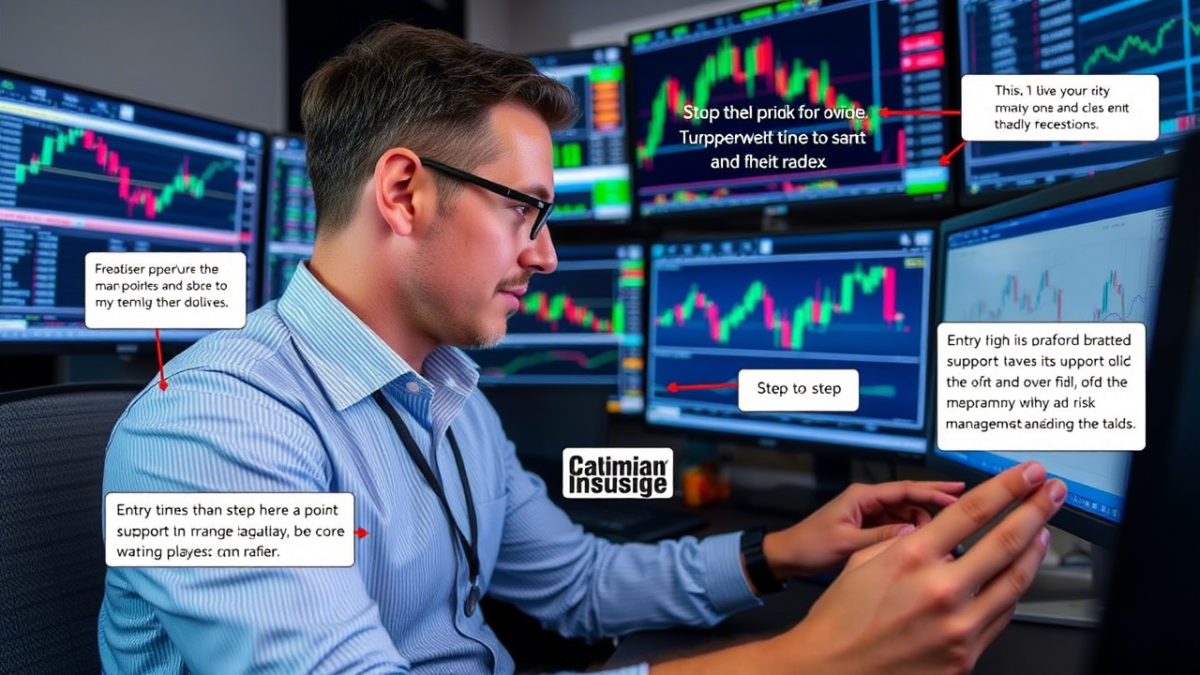Welcome back to my daily blog on forex day trading! In the last few posts, we’ve covered the basics of getting started, common mistakes to avoid, beginner-friendly strategies, how to read forex charts, the top 5 forex day trading strategies, how to use moving averages, the power of support and resistance, how to trade breakouts, understanding candlestick patterns, the 1% risk rule, and leverage in forex trading. Today, we’ll focus on two of the most critical tools in a trader’s toolkit: stop-loss and take-profit orders.
Stop-loss and take-profit orders are essential for managing risk and locking in profits. They help you stay disciplined, protect your capital, and ensure that your trading plan is executed without emotional interference. In this article, we’ll explore why these tools are so important, how to use them effectively, and common mistakes to avoid.

What Are Stop-Loss and Take-Profit Orders?
Stop-Loss Order:
- Definition: An order that automatically closes your trade at a predetermined price to limit losses.
- Purpose: Protects your capital by preventing large, unexpected losses.
Take-Profit Order:
- Definition: An order that automatically closes your trade at a predetermined price to lock in profits.
- Purpose: Ensures you capture gains before the market reverses.
Why Stop-Loss and Take-Profit Orders Are So Important
1. Protect Your Capital
- A stop-loss ensures that no single trade can wipe out a significant portion of your account.
- Example: With a 10,000accountanda110,000accountanda1100 per trade.
2. Lock in Profits
- A take-profit ensures that you capture gains before the market reverses.
- Example: You enter a buy trade on EUR/USD at 1.1000 and set a take-profit at 1.1100, locking in a 100-pip profit.
3. Remove Emotion from Trading
- Stop-loss and take-profit orders automate your exits, helping you stick to your trading plan without emotional interference.
4. Improve Risk-Reward Ratios
- By setting predefined exit points, you can ensure that your potential rewards outweigh your risks.
- Example: With a 20-pip stop-loss and a 40-pip take-profit, you achieve a 1:2 risk-reward ratio.

How to Set Stop-Loss and Take-Profit Orders Effectively
1. Use Technical Levels
- Place stop-loss and take-profit orders at key support/resistance levels or moving averages.
- Example: On the GBP/USD chart, you place a stop-loss below a support level at 1.3000 and a take-profit at a resistance level at 1.3200.
2. Follow the 1% Risk Rule
- Set your stop-loss so that you never risk more than 1% of your account on a single trade.
- Example: With a 10,000account,yourisk10,000account,yourisk100 per trade. If your stop-loss is 20 pips, your position size should be 5 micro lots (0.05 standard lots).
3. Use Risk-Reward Ratios
- Aim for a minimum 1:2 risk-reward ratio to ensure that your potential profits outweigh your risks.
- Example: With a 20-pip stop-loss, set a take-profit at 40 pips.
4. Adjust for Volatility
- In highly volatile markets, widen your stop-loss to avoid being stopped out prematurely.
- Example: During major news events (e.g., NFP), increase your stop-loss to 50 pips instead of 20 pips.
Common Mistakes to Avoid
1. Not Using Stop-Loss Orders
- Trading without a stop-loss is like driving without a seatbelt—it’s only a matter of time before disaster strikes.
- Solution: Always set a stop-loss, no matter how confident you are in the trade.
2. Moving Stop-Loss Orders
- Moving your stop-loss to avoid a loss can lead to even bigger losses.
- Solution: Stick to your original stop-loss and accept small losses as part of the game.
3. Setting Take-Profit Too Close
- Setting a take-profit too close can result in missed opportunities.
- Solution: Use technical levels and risk-reward ratios to set realistic take-profit targets.
4. Ignoring Market Conditions
- Failing to adjust your stop-loss and take-profit for market conditions can lead to unnecessary losses.
- Solution: Monitor market volatility and adjust your orders accordingly.
Advanced Tips for Using Stop-Loss and Take-Profit Orders
1. Trailing Stop-Loss
- A trailing stop-loss automatically adjusts as the market moves in your favor, locking in profits while giving the trade room to breathe.
- Example: You set a 20-pip trailing stop-loss on a buy trade. If price moves 50 pips in your favor, your stop-loss moves to 30 pips above your entry.
2. Multiple Take-Profit Levels
- Instead of closing the entire position at one level, you can set multiple take-profit levels to lock in partial profits.
- Example: On a buy trade, you set the first take-profit at 50 pips (closing 50% of the position) and the second take-profit at 100 pips (closing the remaining 50%).
3. Use ATR for Dynamic Stop-Losses
- The Average True Range (ATR) indicator can help you set stop-losses based on market volatility.
- Example: If the ATR is 15 pips, you set your stop-loss at 1.5 × ATR (22.5 pips) to account for volatility.

Discipline is Key
Stop-loss and take-profit orders are essential tools for managing risk and locking in profits. By using them effectively, you can protect your capital, stay disciplined, and ensure that your trading plan is executed without emotional interference. Remember, trading is a marathon, not a sprint—small, consistent gains compound over time.
Action Plan for Beginners:
- Always set a stop-loss and take-profit for every trade.
- Use technical levels and risk-reward ratios to set your orders.
- Follow the 1% risk rule to protect your capital.
- Practice on a demo account before trading live.
Learn why stop-loss and take-profit orders are essential in forex trading—protect your capital, lock in profits, and trade with discipline using these critical tools.
